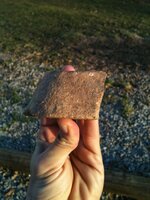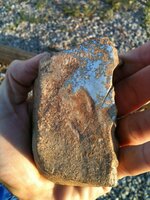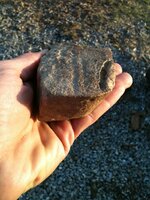Kyboy
Full Member
- Dec 27, 2009
- 100
- 32
- Detector(s) used
- Nokta Makro Simplex+
Minelab Explorer II
Garret GTAX 550
My friend Stephen found this on my farm, in a field close to the Ohio river. On his Explorer XS it reads like silver. (upper right on screen, cond 28) It weighs a little over 2lbs. It was cast as a bar but is broken. It is rough like sand was used in the mold. It has been in the ground a long time I think. I tried the poor mans silver test on a cleaned area, and the "burn a match" test. Both of which in my opinion failed for silver. It is NOT magnetic. It is Not lead. It is very hard and dense. We both are stumped. What could have been valuable enough to purify and cast as an ingot?








